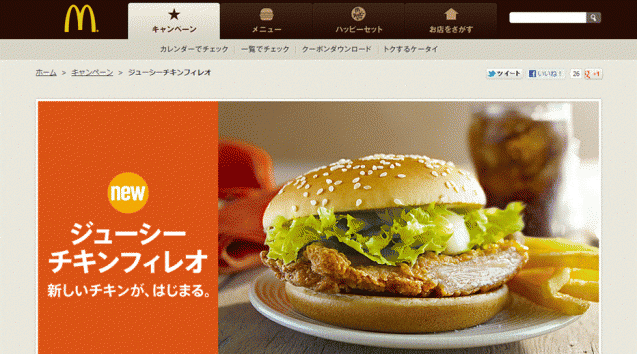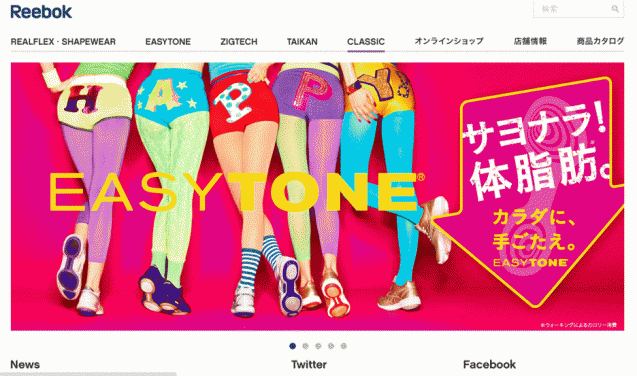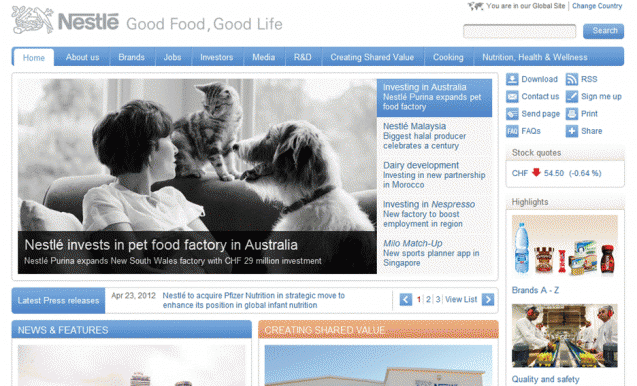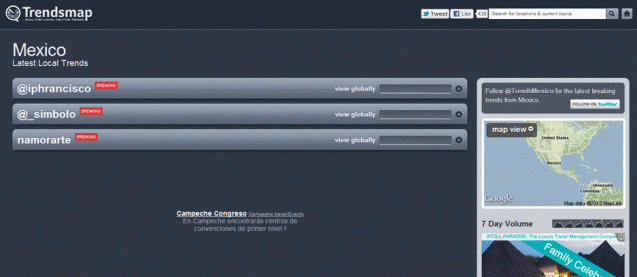A solid understanding of localization is now critically important for any company looking to drive into international markets. No matter what product or service is being sold, it sure that it will face stiff competition both locally and from abroad, which is why localization – translating and adapting content for specific markets – is absolutely vital to gain advantage.
Accepting the vital import of localization, let’s take a look closer look at exactly what it entails.
Imagery
As important as translating the company website’s content, adapting a location based appearance is key. The visual aspect is absolutely vital to forge a strong relationship with potential customers, and especially given our likeness and differences culturally. Companies must therefore take great care in choosing images that are both appropriate and sensitive for the target audience.
Let’s look at an example of this in practice. The screenshot below is taken from the McDonalds Japan website. The obvious difference is that there are no Big Macs or Cokes – the choice of a chicken burger would probably seem odd to most western viewers, but in Japan this is not the case, where many McDonalds’ customers actually prefer, shall we say a ‘healthier’ options.

It’s important to remember that the way an image is perceived by one audience will often be totally different than among other groups. In addition, we also have to consider cultural appropriateness. Looking at another screenshot, taken from the Reebok Japan website, we can see that sex sells in Japan as much as it does in the west, but this approach would hardly be appropriate for Middle Eastern countries, among some other regions. Inappropriate, in some societal circles, can be tantamount to business suicide.

When localizing a company website, it’s also important to keep in mind attention to detail, especially with regard to cultural sensitivities. Little things such as a ‘thumbs up’ gesture could be considered very offensive in certain countries. Similarly, mistaking the Belgian flag with the German one, for example, is shooting your business outreach team in their marketing feet. Colors should also be considered. In Thailand, for instance, red is a very negative color associated with evil and death. As such, it’s the only country in the world where the traditional ‘red cross’ hospital sign has been replaced with the color green.
The bottom line is, think very carefully about your images. They can make the difference between roaring success and utter calamity.
Design Aesthetics
Let’s be clear about one thing – there is no one size fits all approach to localized business, and in particular design aspects. Around the world, things are done differently, people have different preferences, and so any company looking to engage itself must learn to adapt.
Let’s take a look at another example, this time Nestle, one of the largest manufacturers of drinks, snack foods and baby foods in the world. The American version of Nestle’s website (below) is relatively clean cut and simple.

While in contrast, the Japanese version couldn’t be starker – it’s incredibly cluttered, with a mish-mash of different colors, videos and headlines, and a somewhat ‘cutesy’ feel. While minimalist design is in vogue many places…

This is how things are done in Japan. Asian people are far more receptive to interactive websites with lots of images, bright colors and background information. On the other hand, Americans and Europeans prefer cleaner, much simpler content, a la Google.
So, the design of your company’s website needs to change depending on audience too, and in many cases, this will be a radical change. The point is, to ensure that the website is consistent with local designs so that it feels familiar to the target audience. A pretty simple concept, if you think about it.
Social Media Localization
These days, a website is nothing if it’s not linked to a solid social media tools, campaigns, engagement. This is becoming more and more true, even for smaller companies, traditionally unable to compete with the multi-million dollar SEO budgets of large corporations. For many websites, social media is going to be the biggest driver of traffic and conversions in the future, which is why getting it right is as important, if not moreso, than tailoring the site’s look and feel to specific target markets.
This being said, we have to be careful with social media localization, as there are two critical aspects to this. The first involves localizing promotions and benefits so that they are appropriate to consumers in different parts of the world. While a second aspect to consider is that our approach to social media engagement will need to change, also depending on the audience.
Remember that your audiences, while they may be interested in your company, are actually very, very different. Tweet about raw fish, noodles and manga and your Japanese audience will no doubt lap it up, but try the same thing in Germany and at best you’ll be ignored. So topical differences can be vital variables to consider.
Each population center is miles apart in terms of culture, icons and significant dates and events, and this gap becomes wider the further we travel. It’s safe to say that business needs to approach social media localization in a different way for each market tageted, and while this may seem like a “no brainer” to some, it’s surprising how many companies leave off adding expert help in this department.
Social media localization is still a fairly novel concept of course, but one tool that can help is Trendsmap. Primarily designed for Twitter, Trendsmap allows users to follow current trends in various parts of the world, from Venezuela to Australia and everywhere else in between. Proactive users will be able to identify hot topics and use these ‘opportunities’ to engage with their followers.

And, another business strategy might be to scan the horizon for new cutting edge expertise. Tools and services such as SocialLingo, a new product from ComTranslations (a globalization solutions provider), offer insight into the future of the social global interactive. SocialLingo, and tools like it, boil down to handing over control of your social media campaign to trusted ‘experts’ in language and localizations. Such services can enable your social media strategies and transform them into multi-linguistic and multi-cultural conduits for marketing and sales, branding, and PR, into as many different languages as there exist. Add in professional social media experts ensuring that all posts, tweets, promotions, greetings, news updates and shared content is appropriate to the target audience – and a business has a powerful new arm for doing International outreach and communications.
1-2-3 Global
Such a targeted approach is crucial basic elements of success for any entrepreneurial expansion of digital business (virtually any business in fact) internationally. In order to achieve these three main (basic) goals of social media localization; creating a personal experience for consumers, fostering engagement by sharing common ground, and forming a close-knit community of fans and followers worldwide (or inclusive of select target societies). Website and social media localization becomes more complex too, as more and more markets are targeted. And, adding in new mobile streams and services, further complicates the overall localization pie too. But still, creating a loyal customer base at the grass roots level and an overwhelmingly positive image of your brand among numerous different communities is well worth the effort involved. In the end, the oversimplified goal end up attained, your business goals being understood across all your markets.





